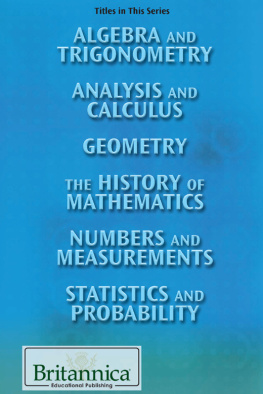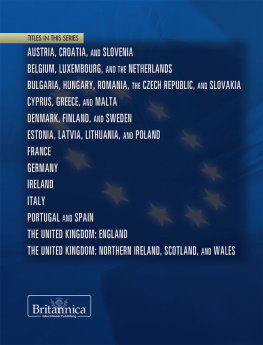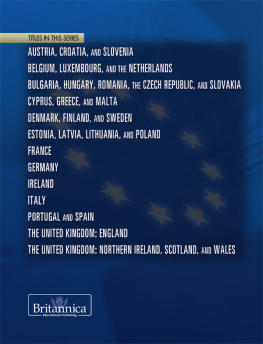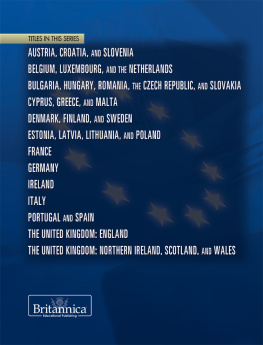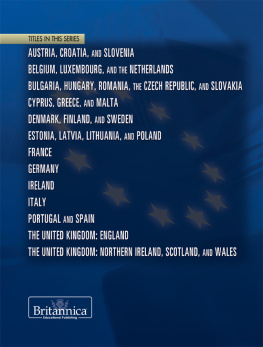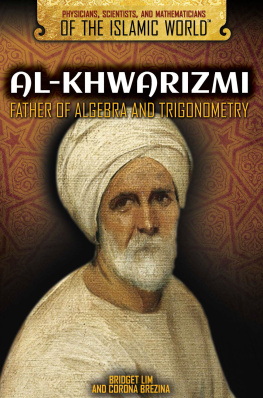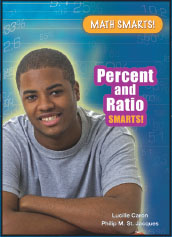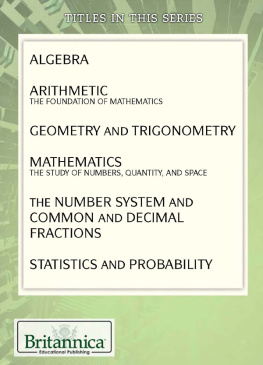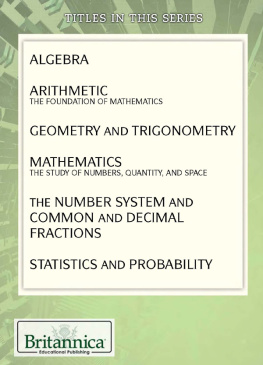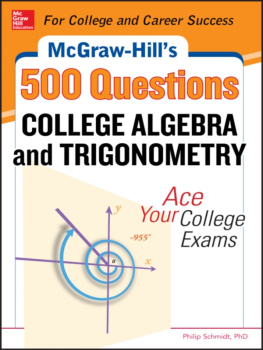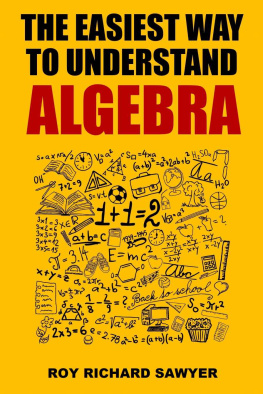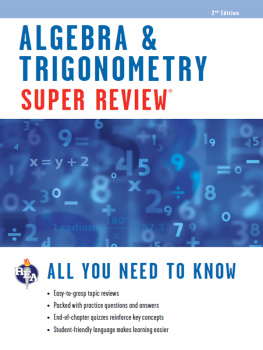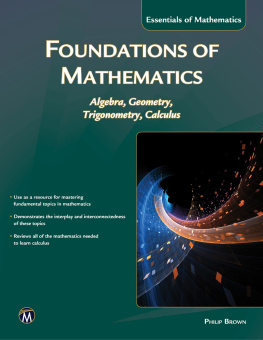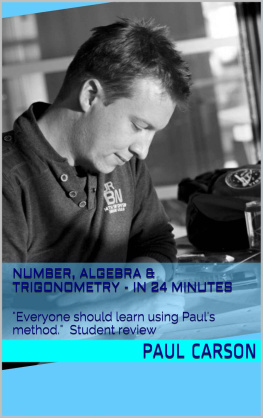
Published in 2018 by Britannica Educational Publishing (a trademark of Encyclopdia Britannica, Inc.) in association with The Rosen Publishing Group, Inc.
29 East 21st Street, New York, NY 10010
Copyright 2018 by Encyclopdia Britannica, Inc. Britannica, Encyclopdia Britannica, and the Thistle logo are registered trademarks of Encyclopdia Britannica, Inc. All rights reserved.
Rosen Publishing materials copyright 2018 The Rosen Publishing Group, Inc. All rights reserved.
Distributed exclusively by Rosen Publishing.
To see additional Britannica Educational Publishing titles, go to rosenpublishing.com.
First Edition
Britannica Educational Publishing
J.E. Luebering: Executive Director, Core Editorial
Andrea R. Field: Managing Editor, Comptons by Britannica
Rosen Publishing
Nicholas Faulkner: Editor
Nelson S: Art Director
Brian Garvey: Series Designer/Book Layout
Cindy Reiman: Photography Manager
Nicole DiMella: Photo Researcher
Library of Congress Cataloging-in-Publication Data
Names: Faulkner, Nicholas, editor. | Hosch, William L., editor.
Title: Algebra and trigonometry / edited by Nicholas Faulkner and William L.
Hosch.
Description: New York : Britannica Educational Publishing, in Association with
Rosen Educational Services, 2018. | Series: The foundations of math |
Audience: Grades 9-12. | Includes bibliographical references and index.
Identifiers: LCCN 2017013885 | ISBN 9781538300381 (eBook)
Subjects: LCSH: Mathematicians--Biography--Juvenile literature. |
Algebra--Juvenile literature. | Trigonometry--Juvenile literature.
Classification: LCC QA28 .A534 2018 | DDC 512/.13--dc23
LC record available at https://lccn.loc.gov/2017013885
Manufactured in the United States of America
Photo credits: Cover Constantine Pankin/Shutterstock.com; p. 19 DEA/G. Dagli Orti/De Agostini/Getty Images; p. 30 Manakin/iStock/Thinkstock; p. 36 Peter Macdiarmid/Getty Images; p. 71 National Library of Medicine, Bethesda, Maryland; p. 143 Courtesy of the Royal Norwegian Embassy, Washington, D.C.; p. 147 Courtesy of the trustees of the British Museum; photograph, J.R. Freeman & Co. Ltd.; p. 153 Courtesy of The Master and Fellows of Trinity College, Cambridge, England; p. 171 Courtesy of the Archives de lAcadmie des Sciences de Paris; photograph, J. Colomb-Gerard, Paris; p. 214 Sheila Terry/Science Source; pp. 219, 236 Photos.com/Thinkstock. All other illustrations, diagrams, maps, formulas, and equations Encyclopdia Britannica, Inc.
CONTENTS
A lgebra has often been described as arithmetic with letters. Unlike arithmetic, which deals with specific numbers, algebra introduces variables that greatly extend the generality and scope of arithmetic. The algebra taught in schools involves techniques for solving relatively simple equations.
Our modern word algebra comes from the Arabic al-jabr , which appeared in the title of an algebra text written in about 825 CE by the Arab astronomer and mathematician al-Khwarizmi. The word algorithm is also derived from his name.
More than 3,500 years ago, an Egyptian named Ahmes collected a set of mathematical problems and their solutions. Included were problems such as finding the number that satisfies the equation:
x (23 + 12 + 17 + 1) = 37
About 2,500 years ago, the Greek mathematician Pythagoras started a religious-mathematical brotherhood. Its members were called Pythagoreans. Intensely interested in geometry, they classified numbers according to geometrical properties. For example, they studied the triangular numbers (1,3,6,10, ...) and square numbers (1, 4, 9, 16, ...). The famous Greek geometer Euclid discovered important properties of numbers through a study of geometry. Diophantus, another famous early Greek mathematician, has been called the father of algebra. He treated algebra from a purely numerical point of view. He made a special study of certain types of equations that are today called Diophantine equations.
Modern algebra, or abstract algebra, is a more general branch of mathematics that analyzes algebraic axioms and operations with arbitrary sets of symbols. Special areas of abstract algebra include the study of groups, rings, fields, the algebra of matrices, and a large variety of nonassociative and noncommutative algebras. Special algebras of sets and vectors and Boolean algebras arise in the study of logic. Algebra is used in the calculation of compound interest, in the solution of distance-rate-time problems, or in any situation in the sciences where the determination of unknown quantities from a body of known data is required.
Our algebra of real numbers developed through the centuries from considerations of problems in arithmetic. The study of the algebra of real numbers and the recent recognition of the fundamental importance of the basic principles have led to the development of what is now called modern algebra or abstract algebra.
The concepts of modern algebra have been found to be extremely useful in other branches of mathematics, as well as in the physical and social sciences. A chemist may use modern algebra in a study of the structure of crystals; a physicist may use modern algebra in designing an electronic computer; a mathematician may use modern algebra in a study of logic.
In the algebra of real numbers, we study the properties of addition and multiplication of real numbers that follow as a consequence of certain basic principles. In modern algebra, we may work with any set of objects. We need not work just with real numbers. We consider certain operations on these objects. These operations need not be addition and multiplication. We agree that certain basic principles are satisfied by these operations. These basic principles need not be the same as our basic principles for addition and multiplication of real numbers. Then we derive various properties from assumed basic principles.
An understanding of the fundamental concepts of algebra and of how those fundamental concepts may be applied is necessary in many professional and most technical careers. For engineers and scientists, it is an essential requirement.
Trigonometry is the study of angles and their relations. It also involves the study of trigonometric functions. There are six trigonometric ratios associated with an angle: sine, cosine, tangent, cotangent, secant, and cosecant. These are especially useful in determining unknown angles or the sides of triangles based upon known trigonometric ratios. In antiquity, trigonometry was used with considerable success by surveyors and astronomers.
The word trigonometry comes from the Greek words trigonon (triangle) and metron (to measure). Until about the 16th century, trigonometry was chiefly concerned with computing the numerical values of the missing parts of a triangle (or any shape that can be dissected into triangles) when the values of other parts were given. For example, if the lengths of two sides of a triangle and the measure of the enclosed angle are known, the third side and the two remaining angles can be calculated. Such calculations distinguish trigonometry from geometry, which mainly investigates qualitative relations. Of course, this distinction is not always absolute: the Pythagorean theorem, for example, is a statement about the lengths of the three sides in a right triangle and is thus quantitative in nature. Still, in its original form, trigonometry was by and large an offspring of geometry. It was not until the 16th century that the two became separate branches of mathematics.

